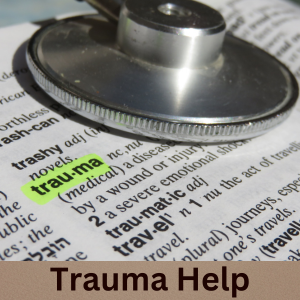Trauma is a complex and multifaceted experience that affects millions of people worldwide. It can be defined as a response to a traumatic event that overwhelms an individual’s ability to cope and can cause long-lasting effects on their emotional, psychological, and physical wellbeing. Contrary to popular belief, trauma is not physically held in the muscles or bones. Instead, the need to protect oneself from perceived threats is stored in the memory and emotional centers of the brain, such as the hippocampus and amygdala. This activates the body whenever a situation reminds the person of the traumatic event(s).
Understanding the Neuroscience of Trauma
The brain plays a crucial role in how an individual responds to a traumatic event. Trauma can cause changes in the brain’s structure and function, including alterations in the amygdala, hippocampus, and prefrontal cortex. The amygdala is responsible for processing emotional responses, while the hippocampus plays a crucial role in memory formation and retrieval. The prefrontal cortex is responsible for regulating emotions and decision-making. Trauma can cause the amygdala to become hypersensitive, leading to an exaggerated fear response, while the hippocampus can become impaired, resulting in fragmented and dissociative memories.
The body’s physiological response to trauma is also significant. When an individual experiences a traumatic event, their body releases stress hormones such as adrenaline and cortisol, preparing them to fight or flee. However, when the perceived threat cannot be resolved, the stress hormones can become chronically elevated, leading to physical symptoms such as increased heart rate, muscle tension, and difficulty sleeping.
Healing from Trauma
Healing from trauma is a long and challenging process, and it is different for everyone. However, there are evidence-based therapies that can help individuals recover from trauma Rapid Transformational Therapy (RTT), and eye movement desensitization and reprocessing (EMDR). RTT finds the root cause and reason for the trauma and helps individuals identify and challenge negative thought patterns and behaviors that are a result of their trauma and transforms them, while EMDR helps individuals reprocess traumatic memories and reduce their emotional intensity.
Mindfulness practices, such as yoga and meditation, can also be helpful in managing the physical symptoms of trauma. These practices can activate the body’s relaxation response, reducing stress and promoting relaxation.
Conclusion
Trauma is a complex experience that affects both the brain and body. While it is not physically held in the muscles or bones, the need to protect oneself from perceived threats is stored in the memory and emotional centers of the brain, such as the hippocampus and amygdala. This activates the body whenever a situation reminds the person of the traumatic event(s). Understanding the neuroscience of trauma is crucial in developing effective treatment strategies that can help individuals recover and heal from their trauma. It is essential to seek professional help when dealing with trauma, and with the right support and resources, it is possible to overcome the long-lasting effects of trauma.
References:
American Psychiatric Association. (2013). Diagnostic and statistical manual of mental disorders (5th ed.). https://doi.org/10.1176/appi.books.9780890425596
Bremner, J. D. (2002). Does stress damage the brain? Biological Psychiatry, 51(4), 257–257. https://doi.org/10.1016/s0006-3223(01)01369-5
Levine, P. A. (2010). In an unspoken voice: How the body releases trauma and restores goodness. North Atlantic Books.
van der Kolk, B. A. (2014). The body keeps the score: Brain, mind, and body
